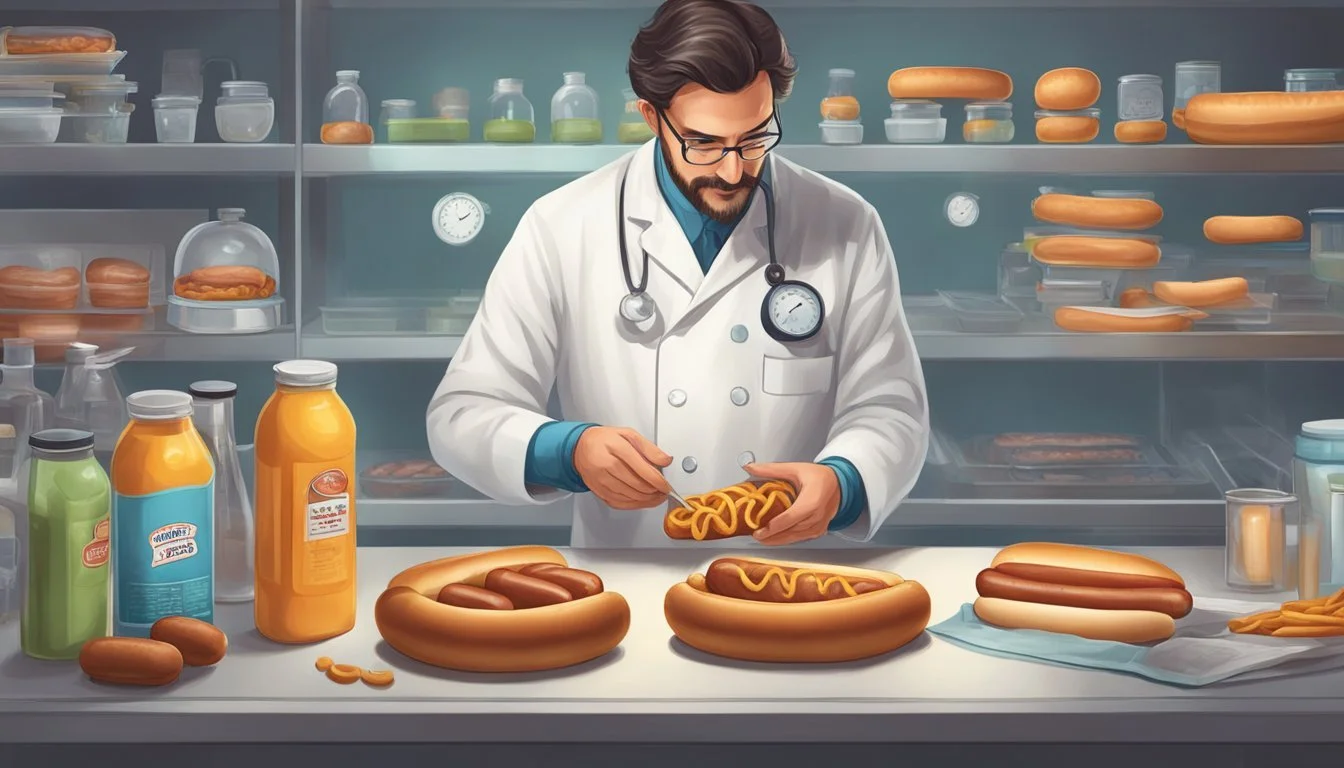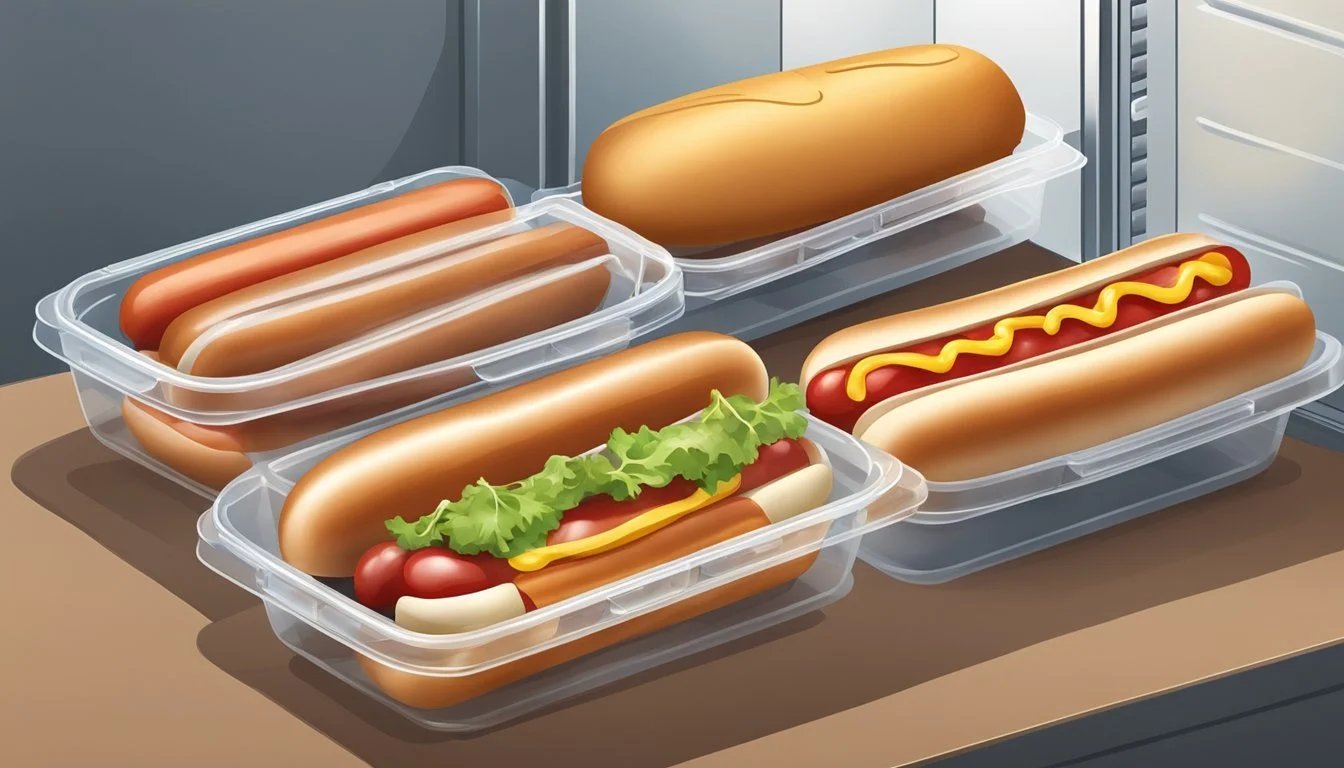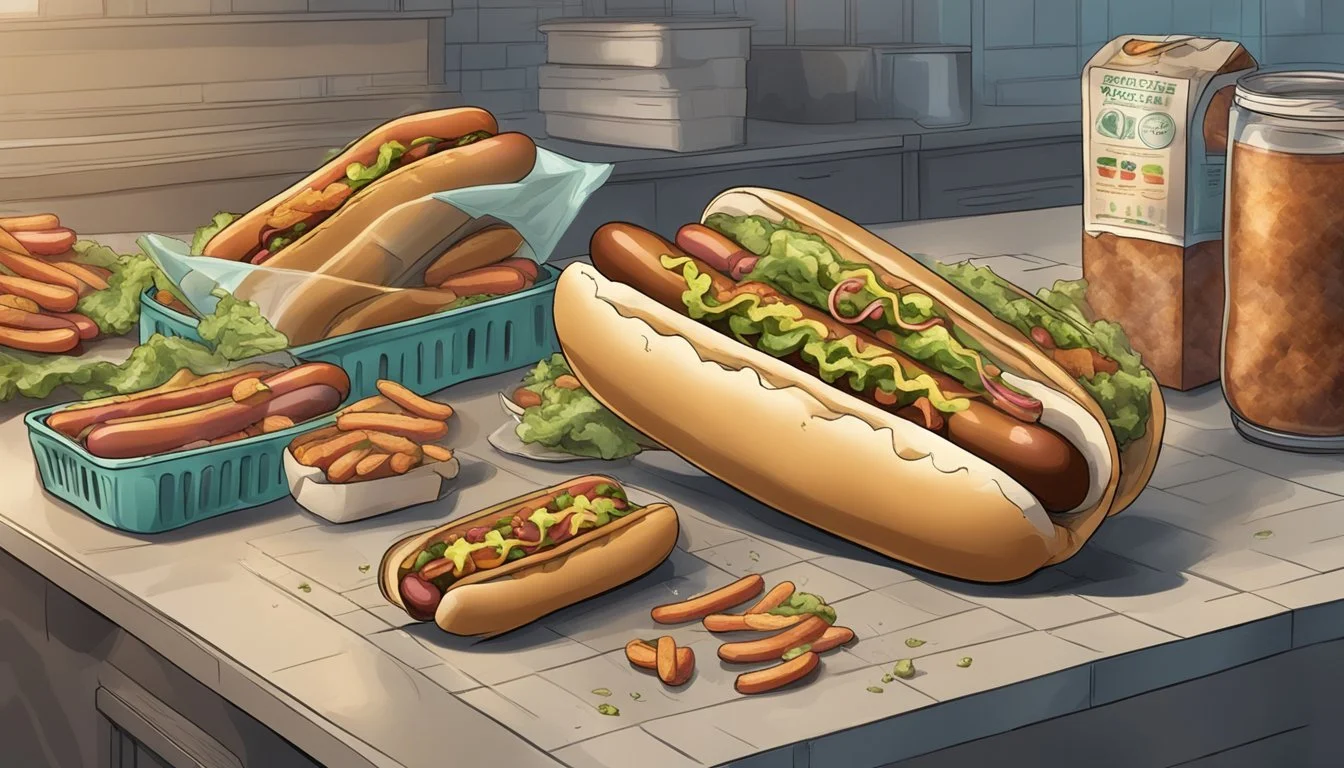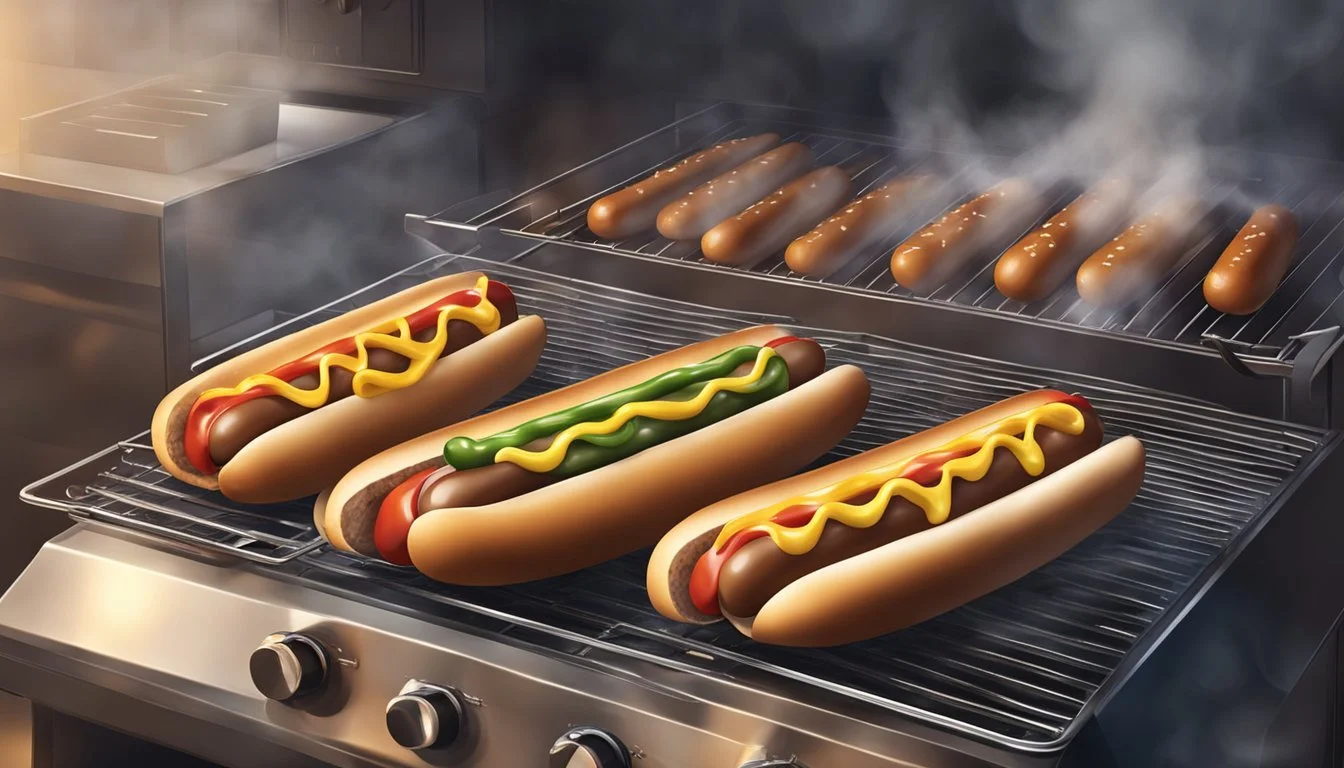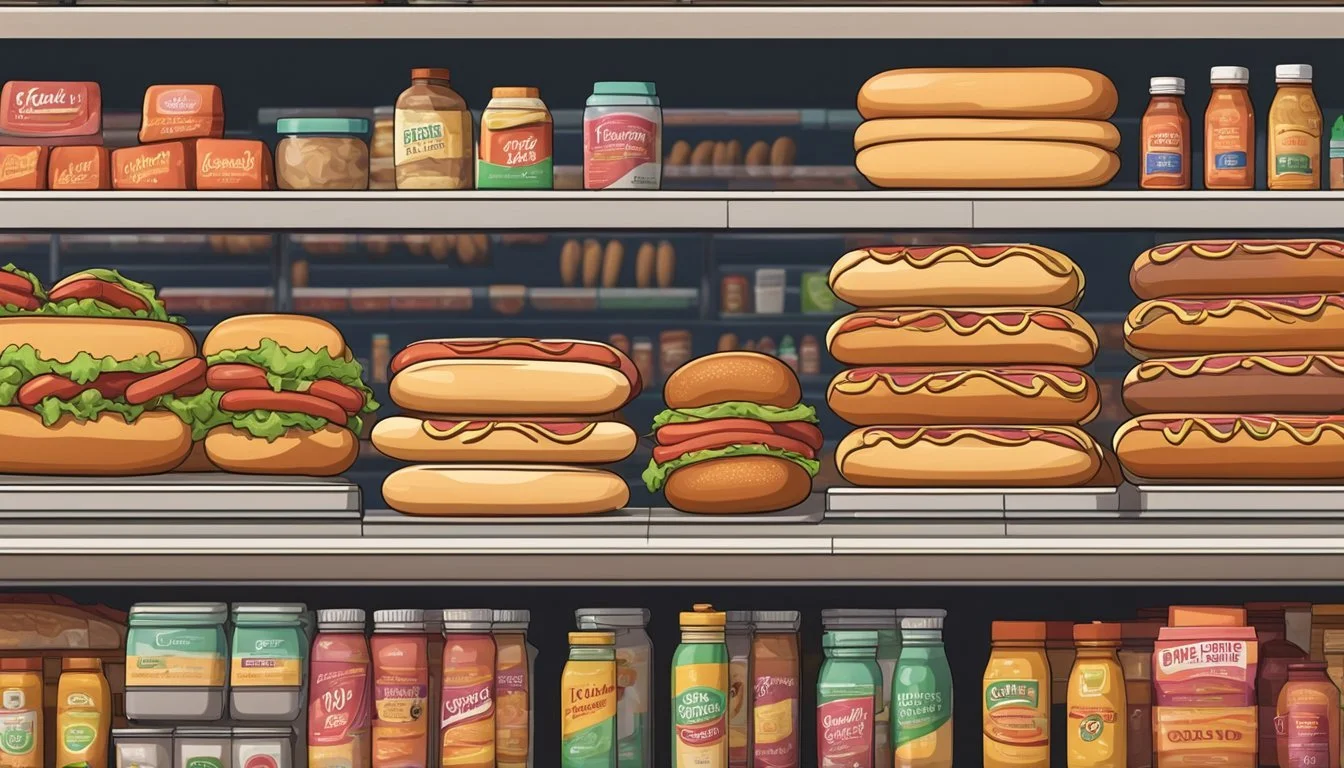How Long Do Hot Dogs Last?
The Shelf Life of Your Favorite Snack
Understanding the shelf life of hot dogs is crucial for both food safety and quality. Hot dogs are a popular processed meat product enjoyed by people worldwide. Their convenience and taste make them a staple at barbecues, ball games, and family dinners. Food safety is paramount when it comes to consuming hot dogs, as improper storage can lead to spoilage and foodborne illnesses.
The lifespan of a hot dog varies depending on whether it is stored in the refrigerator or the freezer, and whether the package has been opened or not. Typically, when stored in the refrigerator, an unopened package of hot dogs can last for about two weeks. Once the package is opened, the hot dogs should be consumed within a week. It's advised to always check the package's expiration date to ensure the hot dogs are still within the safe timeframe for consumption.
In terms of freezing, hot dogs maintain optimal quality for one to two months, though they remain safe to eat beyond this period since freezing preserves their safety indefinitely. When planning to store hot dogs for extended periods, proper sealing and maintaining consistent freezer temperatures at 0 degrees Fahrenheit or below are imperative. Thawed hot dogs should be eaten within one to two days for best quality and safety.
Determining the Shelf Life of Hot Dogs
When it comes to hot dogs, understanding their shelf life is essential for maintaining food safety and ensuring quality. Specific factors such as storage conditions, the presence of preservatives, and packaging influence how long they can be safely consumed.
Expiration Date
The shelf life of hot dogs is signified by expiration dates typically found on the packaging. Hot dogs most commonly have a use-by or sell-by date rather than a hard expiration date. An unopened package of hot dogs can last for 2 weeks in the refrigerator up until the sell-by date, but consumers should always verify the date labeled on the package before consumption. After opening, it’s safe to consume hot dogs for 7 days if refrigerated properly.
Factors Affecting Shelf Life
Several factors contribute to the preservation or decline in quality of hot dogs:
Storage Temperature: Refrigeration at or below 40°F is crucial, as temperatures above can promote bacterial growth.
Preservatives: Added preservatives can extend shelf life. Hot dogs without these may have a shorter shelf life.
Original Packaging: Retaining the original packaging until use can help maintain freshness.
Proper handling, including minimizing the time hot dogs spend at room temperature, also plays a pivotal role in their shelf life.
Hot Dog Types and Their Shelf Lives
Different types of hot dogs may have varying shelf lives:
Unopened hot dogs: With preservatives and kept refrigerated, can last up to 2 weeks.
Opened hot dogs: Should be eaten within 7 days if refrigerated; otherwise, the risk of spoilage increases.
Freezing: Hot dogs can be frozen for up to 1 to 2 months for best quality, though they remain safe beyond that time frame.
By adhering to these guidelines, consumers can enjoy hot dogs in a safe and flavorful manner.
Safe Storage Practices
Ensuring proper storage practices is crucial for maintaining the quality and safety of hot dogs as perishable items. Specific techniques for refrigeration and freezing can help preserve hot dogs, while correct packaging and attention to contamination avoidance are key for extending shelf life and preventing foodborne illnesses.
Refrigeration
Hot dogs should be stored in the refrigerator at or below 40°F (4.4°C). Unopened packages can last up to 2 weeks, while opened hot dogs should be consumed within a week. To maintain freshness, one should:
Place hot dogs on a shelf that maintains a consistent temperature.
Stack packages flat, preventing any liquids from contaminating other foods.
Freezing Techniques
Freezing hot dogs can extend their shelf life up to 1-2 months for the best quality while remaining safe to eat indefinitely. It is important to:
Pre-freeze hot dogs on a tray to prevent them from sticking together.
After they are frozen solid, transfer them to a heavy-duty freezer bag or wrap them tightly in aluminum foil or plastic wrap.
Packaging and Sealing
Proper packaging is paramount in preventing freezer burn and preserving the flavor of frozen hot dogs. They must be:
Wrapped tightly, removing as much air as possible.
Sealed in airtight containers or bags to protect against odors and tastes from the freezer.
Avoiding Contamination
Hot dogs can be a breeding ground for bacteria if not handled properly. To minimize risk:
Always reseal opening packages tightly to keep hot dogs sealed and protected.
Use clean utensils and hands when handling hot dogs to prevent cross-contamination.
Discard any hot dogs that show signs of spoilage, such as mold or off-odors.
Recognizing Spoilage
When it comes to food safety, identifying spoiled hot dogs is crucial to prevent the health risks associated with bacterial growth. This section outlines the various indicators that can signal that hot dogs are no longer safe to consume.
Visual Indicators
Spoiled hot dogs often exhibit noticeable color changes. Fresh hot dogs typically have a uniform pink or brown color depending on the type. Color changes to watch for include:
Grayish tones
Greenish spots, which may indicate mold presence
Olfactory Indicators
The smell of hot dogs is another critical factor in assessing their freshness. One should be wary of:
Sour smell: A tangy or ammonia-like odor is a tell-tale sign of spoilage
Unpleasant, off-putting odors that deviate from the meat's normal aroma
Texture and Consistency
Finally, the feel of hot dogs can provide important insights into whether they've spoiled:
Sliminess: A slimy film on the surface is a strong indicator of bacterial growth
Any unexpected textural changes, such as excessive softness or a sticky consistency
Health Risks of Spoiled Hot Dogs
Eating spoiled hot dogs can result in serious health risks due to the presence of harmful bacteria. Understanding the potential dangers and symptoms associated with spoiled food is crucial for food safety.
Foodborne Illnesses
Spoiled hot dogs can harbor a range of bacteria, with Listeria monocytogenes, Salmonella, and Staphylococcus aureus being among the most common pathogens. These bacteria can multiply rapidly, especially when hot dogs are not stored at the proper temperature, which is below 40°F (4°C) in the refrigerator. Foodborne illnesses can occur when the internal temperature of hot dogs does not reach the recommended 160°F (71°C) during cooking on a grill or by boiling.
Symptoms of Food Poisoning
The presence of bacteria in spoiled hot dogs can cause symptoms that include, but are not limited to:
Nausea
Vomiting
Diarrhea
Abdominal cramps
Fever
Symptoms can appear anywhere from a few hours to several days after consuming contaminated food and can vary depending on the type of bacteria involved. While some individuals may experience mild symptoms, food poisoning can be particularly severe for young children, the elderly, and those with weakened immune systems.
Preventing Illness
Preventing foodborne illness from spoiled hot dogs involves several key steps:
Store hot dogs correctly: Keep unopened hot dogs in the fridge for up to two weeks and only one week after they've been opened.
Cook thoroughly: Ensure hot dogs reach an internal temperature of 160°F (71°C) to effectively kill harmful bacteria.
Cross-contamination: Avoid using the same utensils and surfaces for raw and cooked hot dogs without proper cleaning.
Food safety guidelines: Follow food safety guidelines strictly, including washing hands prior to handling hot dogs and after touching raw meats.
Handling and cooking hot dogs properly are important safety measures that can help prevent the growth of bacteria and reduce the risk of foodborne illness.
Cooking and Reheating Hot Dogs
Proper cooking and reheating are crucial for both food safety and maintaining the desirable texture and flavor of hot dogs. It's important to reach the right internal temperature and use techniques that enhance the hot dogs' qualities.
Proper Heating Techniques
Grilling: One should preheat the grill to a medium-high heat. Hot dogs should be cooked on the grill for 7-10 minutes, turning occasionally, until they reach an internal temperature of at least 140°F for pre-cooked hot dogs or 160°F for beef hot dogs, ensuring both safety and a crispy texture.
Boiling: To boil hot dogs, one needs to bring a pot of water to a rolling boil, then reduce the heat to a simmer. Placing the hot dogs in the pot, they should be heated for 4-6 minutes or until an even heat distribution is achieved.
Reheating Leftovers
When reheating cooked hot dogs, the goal is to restore the texture and warmth without drying them out or cooking them further:
Oven Reheating: For an oven reheating method, preheat to 350°F. Wrap hot dogs in foil and place them in the oven for about 5 minutes. If reheating with buns, the buns can be added in the final few minutes to warm through.
Microwave Reheating: In the microwave, hot dogs should be wrapped in a damp paper towel and reheated for 30 seconds. Check for doneness and, if necessary, continue to heat in 10-15 second increments until the hot dogs are thoroughly warmed.
By following these guidelines, one ensures the reheated hot dogs are safe to eat and enjoyable in terms of taste and texture.
Frequently Asked Questions
This section addresses common inquiries about to the preservation and storage of hot dogs, focusing on their shelf life after opening, the quality changes due to freezing, and strategies for handling bulk purchases.
Shelf Life After Opening
Once opened, hot dogs should be kept in the refrigerator and are best consumed within 7 days. To maintain their quality, the hot dogs should be stored at a temperature of 40°F (4.4°C) or less. It's essential to keep them in an airtight container or a resealable plastic bag to prevent them from absorbing flavors from other foods and to prohibit bacterial growth.
Impact of Freezing on Quality
Hot dogs can be frozen for 1 to 2 months to extend their shelf life. While freezing can safeguard the hot dogs indefinitely from spoilage, the optimal quality is retained only within the recommended timeframe. Over time, one may notice changes in texture due to freezer burn. To minimize this risk, hot dogs should be wrapped tightly in foil or plastic wrap before being placed in an airtight container or freezer bag.
Handling Bulk Purchases
When purchasing hot dogs in bulk, it is critical to manage storage efficiently. Those planning immediate consumption can keep a portion in the fridge, while the rest should be frozen. Separate the hot dogs into meal-sized servings before freezing to avoid repeatedly thawing excess amounts. Thawed hot dogs should not be refrozen, as this can compromise their safety and quality.
Conclusion
When considering the shelf life of hot dogs, one must observe proper storage methods to maintain their freshness. Unopened hot dogs typically last up to 2 weeks in the refrigerator. Once opened, aim to consume them within 1 week to ensure quality and safety.
For long-term storage, hot dogs can be kept in the freezer. Here, they remain safe indefinitely but are best used within 1-2 months for optimal taste. After cooking, hot dogs can be refrigerated again and should be eaten within 3-4 days.
Key Tips for Maintaining Freshness:
Check expiration dates on packaging before consumption.
Refrigerate or freeze hot dogs promptly after purchase.
Store in a sealed container or wrap securely to prevent freezer burn and absorption of other flavors.
To conclude, hot dogs offer a convenient and versatile meal option. Adhering to these guidelines will help ensure that they are enjoyed in their best and safest form. Always discard any hot dogs that show signs of spoilage or if there's any doubt about their safety.


